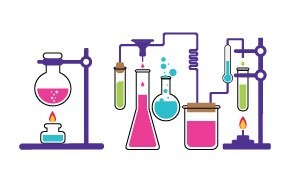Organic Reaction Toolbox

An organic reaction toolbox is a way to organize useful chemical reactions needed for solving synthetic problems and developing new small molecules. When creating a synthetic pathway, a chemist utilizes numerous reactions to transfer one small molecule into a new one. By using protecting groups and creating molecular complexity more directly, detours to pathways can be avoided. Typically, these reactions are characterized into three broad buckets which determine how the reactants combine to form other products.
The first bucket focuses on the predictable reaction characteristics of the 19 main functional groups (alkane, alkene, alkyne, alkyl halide, alcohol, ether, thiol, sulfide, ketone, aldehyde, carboxylic acid, ester, acyl halide, acid anhydride, amide, amine, nitrile, epoxide, and aryl). These characteristics determine the reactivity properties when present on a molecule. By focusing on the reactions that can be used for a specific functional group, a scientist limits the reaction options to those plausible for the desired transformation.
Grouping reactions by the functional groups it generates is another way to classify an organic reaction. Since a chemist typically works backwards from the end molecule, it is helpful to group reactions in this way. For example, if an alcohol is the desired end functional group, one could look at using a Grignard reaction with an aldehyde or a ketone, a reduction reaction of either a carboxylic acid, an aldehyde, a ketone, or an ester, or a hydration reaction of an alkene.
The third type of reaction group focuses on reactions that alter the carbon-carbon skeleton through bond creation or breaking. Tremendous advances in synthetic methods for C-C bond formation now make it possible to choose from over 100 different reactions. These advances are due to various factors, including the development of robust and reliable protocols for cross-coupling, increased accessibility to various organometallic reagents, and the creation and improvement of stoichiometric reagents which serve to place a specific carbon-containing moiety.
Related Technical Articles
- Acid and base chart lists the strength of acids and bases (strongest to weakest) in order. Simple to use laboratory reference chart for scientists, researchers and lab technicians.
- The aldol condensation reaction is an organic reaction introduced by Charles Wurtz, who first prepared the β-hydroxy aldehyde from acetaldehdye in 1872.
- The Baeyer-Villiger oxidation is the oxidative cleavage of a carbon-carbon bond adjacent to a carbonyl, which converts the ketones to esters and the cyclic ketones to lactones.
- As a versatile hydride reagent, 1-hydrosilatrane can be used in reduction reactions to synthesize alcohols, amines, their chiral counterparts, and esters from aldehydes/ketones.
- See All (29)
- Scienceware® Break-Safe™ ampule opener
To continue reading please sign in or create an account.
Don't Have An Account?